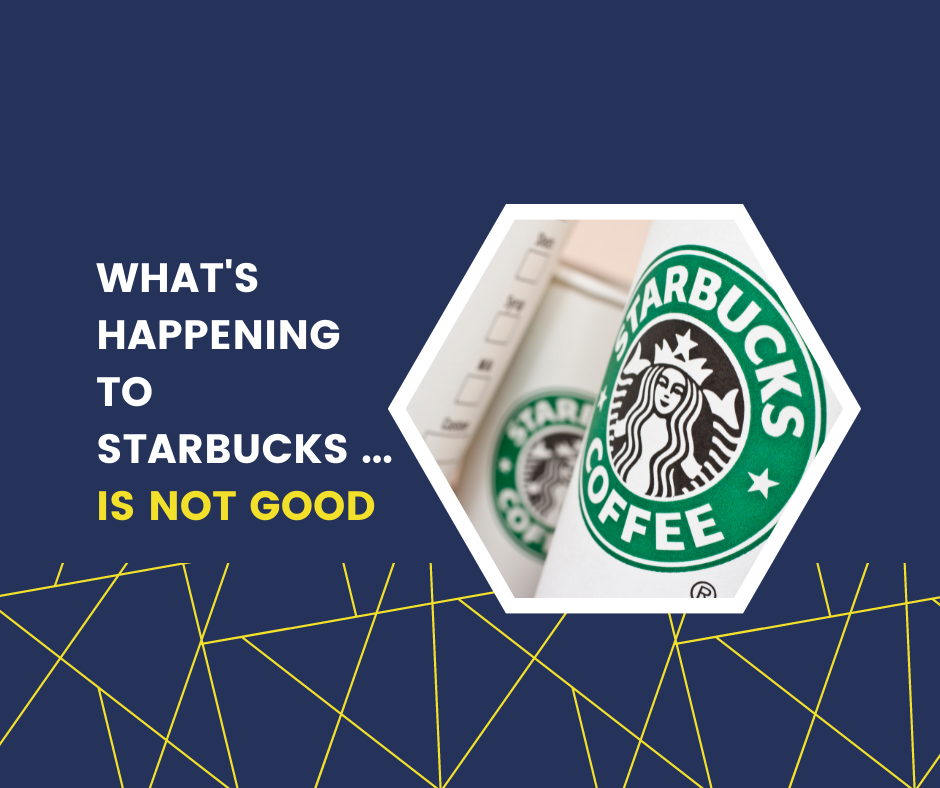I’ve long held up Starbucks as an example of customer experience that can inform all types of businesses including medical practices. Their role in society as the “third place” between home and work allowed the company to grow tremendously over the past three decades as they changed coffee consumption from a commoditized category to a premium experience. They became a household name while demonstrating that consumers will pay more for goods and services when they are part of a better experience.
Things have changed in the past few years. For the worse. A recent article in Fast Company highlighted numerous issues plaguing this ever-present giant. With more locations than any food venue not called Subway or Mcdonald’s, Starbucks seems to have moved away from its reputation as this place to meet and talk. Mobile “to go” orders comprise 80% of their revenue. The pandemic only accelerated this trend, and drive-thru lanes seem to become the norm for Starbucks wherever feasible. The article describes one new Starbucks location being tested where customers don’t even have to interact with a human, thanks to their smartphone app. That app – and the embedded rewards program – is being data mined using artificial intelligence to predict buying behavior. All this strikes me as big-brotherish and creepy.
The company has a reputation for being generous with employees when it comes to salary and benefits. For many years, Starbucks was known as a progressive employer, offering health to part-time workers and funding college tuition for those wanting to pursue higher education. Lately, however, employees are organizing and forming unions. That doesn’t happen when employees are fulfilled. Part of this comes from the ruthless automation employed in many stores, where the human labor has to meet standards for how quickly orders need to be filled — 10 customers per 30 minutes —without regard for the crazy concoctions (inspired by TikTok) that some customers seek in order to one-up their friends.
This current reality is vastly different from the Starbucks I got to know in the late 1990s. Recall the first time you ever went into a Starbucks. It was different, from the language to the ordering process to the delivery of coffee beverage customized the way you want it. Around that time, I attended a Fast Company conference and got to meet Scott Bedbury, the Starbucks marketing executive responsible for building the brand. He is one smart dude, having previously served as Nike’s ad director that came up with “Just Do It.” In the Fast Company article, he describes the research with customers to understand how their offering appealed to all the senses (not just taste). This sensory assessment concluded by asking, “When this coffee experience is as good as it can possibly be, what do you feel?” That’s a great question to begin to uncover the emotion of a purchase decision, even one that’s only five dollars.
What’s happening now is sad given the tradition and history of the company. If you have time, I encourage you to read the whole article. It’s eye-opening, to say the least. Here are my key takeaways on how this story applies to medical practices that want to stand out based on patient experience:
Refresh the experience — coming up with ideas to make the experience better is an ongoing activity. Even if you implement a great idea that is well received, its perceived value over time will likely diminish. Don’t rest on your laurels; keep exploring in this regard.
“Efficient” doesn’t always lead to a better experience — sometimes the service component of an experience gets automated with the thinking that “faster means better.” This is not always the case. Be careful when evaluating technology intended to help improve customer service for patients. Sometimes efficiency is gained at the expense of effectiveness when it comes to making patients feel special and like their time is valued.
Take care of your employees — be open to changing needs of employees over time. Survey them either formally or by asking, “What can we do to make this an even better place to work?” It looks like Starbucks, known for being a progressive employer, may have stopped asking this question a few years ago.
Breaking News: Howard Schultz Returns as CEO; Cancels $20 Billion stock buyback
Just after I wrote this blog, I saw the above headline. Howard Schultz returns as CEO of Starbucks. He also made a huge decision. Schultz decided to cancel the company’s plans to buy back $20 billion of its stock so they can invest more in their people. Whether this is an attempt to stop the recent unionizations or not, taking care of your employees will benefit everyone in the end. In my opinion, this is a good development for the company and for those of us that visit Starbucks.

